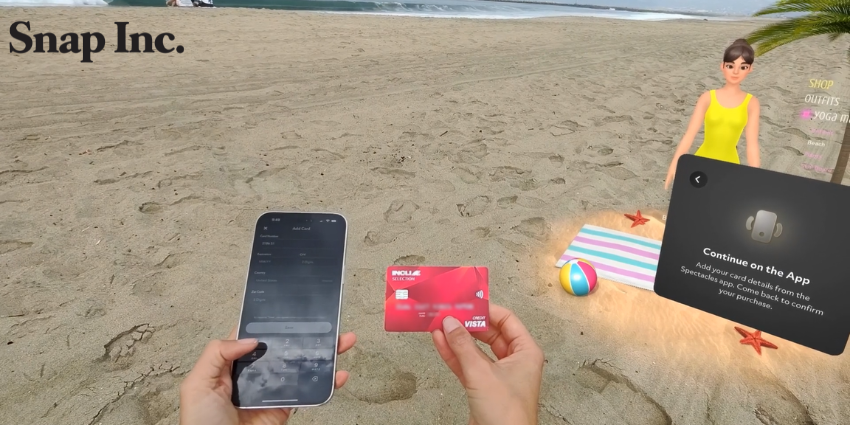Author: Prakhar Bansal, Analyst, QKS Group
Retail Media Networks (RMNs) have become a major part of digital advertising, giving retailers a way to monetise their own channels, websites, apps, and even physical stores. The landscape changed in 2025, it’s no longer just about banner ads or sponsored listings.
We’re now seeing a shift from ads to experiences.
As immersive technologies like augmented reality (AR), virtual reality (VR), and spatial computing enter the picture, retailers are moving from static promotions to interactive storytelling. This isn’t hype, it’s happening right now. And the question is, are brands and retailers ready to make the leap from media seller to immersive content creator?
In XR retail, lay annexe positioning, spatial commerce, and avatar-brand storytelling have begun remapping attention and how preference formation takes place.
Retailers as Immersive Media Companies
Retailers have been media players for a while owning customer data, running programmatic campaigns, and offering sponsored product placements. However, in the year 2025, it has taken it a step further.
Now, retailers are testing XR-powered engagement zones inside their stores and mobile applications.
- Walmart has piloted interactive displays where shoppers can scan a product and get a 3D preview, brand video, or a mini-game for improving consumer engagement.
- Carrefour is experimenting with AR overlays that turn regular shelves into immersive ad spaces featuring recipes, brand tips, or limited-time promotions.
Retailers who deploy XR as a media logic, designing for dwell time, emotional memory, and cognitive retention, are emerging as powerful immersive media publishers.
Why RMNs Work: First-Party Data Meets Immersive Analytics
Traditional RMNs have always relied on first-party data that includes loyalty cards, purchase history, and click paths. However, when XR is mixed, it starts capturing how people engage based on their buying behaviour. This gives brands much deeper insight into the shopper’s intent. Furthermore, it gives consumers with better immersive content that drives offline or online purchases in real time.
Immersive Technologies Transforming the RMN Stack
The RMN tech stack is experiencing a paradigm shift from display ad servers to spatial computing engines. XR, therefore, facilitates:
- 3D Product Exploration: View and manipulate product models in true scale.
- Virtual Try-Ons: Dress rendering of apparel, makeup, and accessories through mobile AR.
- Digital Twins: A virtual replica of store layouts for immersive campaign placement and shopper testing.
- WebAR Integration: Deploy XR functionality right out of the browser, hence eliminating the barrier of app dependency.
This constellation of tools turns advertising into contextual aid instead of distraction-an evolutionary step into the ingraining of usefulness into brand experience.
In-Store RMNs and the Rise of Phygital Experiences
The phygital band has a very last seat there in the physical store turning into a digital canvas. Retailers in the process of investing in:
- AR Shelf Tags (Tesco): Dynamic overlays, providing price, nutrition, and promo data in real time.
- Smart Mirrors (Boots): Offers real-time makeup try-on, skin analysis, and beauty tutorials to facilitate browsing into buying.
- Mixed Reality Displays: In-aisle holographic demos and gesture-activated product storytelling from marketing down to moment-of-buy influence.
These deployments reflect a new expectation, when shoppers encounter brand content in the aisle that helps them decide instead of selling to them the experience becomes both measurable and memorable.
Immersive Advertising Formats: What’s Working?
In 2025, the most effective ones stand across three pillars: lowest user friction, high narrative immersion, and embedded utility.
- Branded XR Mini-Games: Give an intimate dose of interaction, rewarding users with discounts or loyalty points.
- Avatar-Based Assistance: AI brand reps that assist users through virtual aisles or AR overlays.
- Virtual Pop-Ups: Temporary 3D showrooms or virtual stores to create urgency and exclusivity.
New metrics like time-in-scene, interaction density, and conversion per immersive session are replacing traditional CTR and impression-based models.
Challenges and Trade-Offs
Despite all that can happen, immersive RMNs face structural trade-offs:
- Gun Fragmentation: Content needs to perform across mobile, AR headsets, smart kiosks, and browser-based environments. Hence complexity.
- Latency vs. Realism: High-resolution XR needs bandwidth and compute performance that may not always align with retail infrastructure.
- User Fatigue: Over time, too much of anything in the immersive world can lose the novelty or even become a cognitive burden.
- Privacy Tensions: Merge spatial behaviour data with purchase history, and you are staring down glaring questions of ethics and compliance.
However, scalability remains a functioning carve not of ambition but of integration only those with flawless execution of media-retail will hit the jackpot for real ROI.
Conclusion: Is XR the Fourth Wave of Digital Advertising?
If search indexed the web, and socially connected people, and RMNs monetized shelf attention, then XR is poised to lend a human touch to interaction. The life of advertising is entering a period where consumers don’t just see ads- they inhabit them.
The way forward for the brands and retailers shares propping need of:
- Ad operations and spatial UX teams deeply aligned
- Strategic investment in inter-device creative pipelines
- Governance frameworks for the use of immersive data
In essence, the real end isn’t tech adoption, it’s experience orchestration. Those who get that right will not just win media spend, they will own moments of influence.
Author: Prakhar Bansal, Analyst, QKS Group






